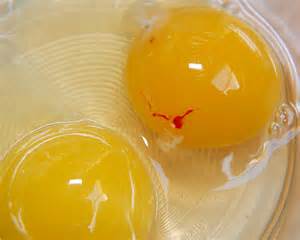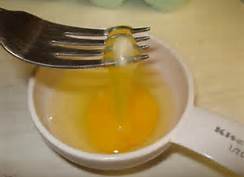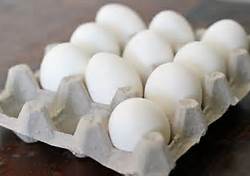Have These Egg Issues Been Bugging YOU?
By Alice Osborne
They've been bugging me, so I decided to hunt for answers. No more old wives tales and urban legends to cloud the truth. Here, from the Incredible Edible Egg organization (www.incredibleegg.org) comes tested answers:
Q: Does a blood spot mean an egg is contaminated?
A: No. You can't see bacteria with the naked eye. Blood or meat spots are occasionally found on an egg yolk and are merely an error on the part of the hen. They're caused by the rupture of a blood vessel on the yolk surface when it's being formed or by a similar accident in the wall of the oviduct. Most eggs with blood spots are detected by electronic spotters and never reach the market. But, even with mass scanners, it's impossible to catch them all. Both chemically and nutritionally, eggs with blood spots are fit to eat. You can remove the spot with the tip of a knife, if you wish.
Q: Are the twisted, ropey strands of egg white safe?
A: Yes. These strands are the chalazae which anchor the yolk in the center of the thick white. They're composed of nutritious egg albumen and do not indicate contamination. In fact, the more prominent the chalazae, the fresher the egg. These natural parts of the egg don't interfere with cooking or beating of the white, and you don't need to remove them, although some cooks like to strain them from stirred custard.
Q: Does the eggshell protect an egg from bacteria?
A: Yes and no. The egg has many natural, built-in barriers to help prevent bacteria from entering and growing. These protect the egg on its way from the hen to your home. But, although it does help, the porous shell itself is not a foolproof bacterial barrier. For additional safety, government regulations require that eggs be carefully washed with special detergent and sanitized.
Other protective barriers include the shell and yolk membranes and layers of the white which fight bacteria in several ways. The structure of the shell membranes helps prevent the passage of bacteria. The shell membranes also contain lysozyme, a substance that helps prevent bacterial infection. The yolk membrane separates the nutrient-rich yolk from the white.
In addition to containing antibacterial compounds such as lysozyme, layers of the white discourage bacterial growth because they are alkaline, bind nutrients bacteria need, and/or don't provide nutrients in a form that bacteria can use. The thick white discourages the movement of bacteria. The last layer of white is composed of thick ropey strands which have little of the water that bacteria need but a high concentration of the white's protective materials. This layer holds the yolk centered in the egg where it receives the maximum protection from all the other layers.
Q: Do eggs NEED to be refrigerated?
A: The answer is "Yes." and "No." If you have farm- or backyard-fresh eggs (those from your home or your neighbor's), and they are left unwashed, then NO, they can be kept out on the counter for up to three months. Everything I've read supports this. And everything I've read regarding store-bought eggs says "Better safe than sorry and store them below 40°F (your refrigerator)." The reason why eggs are kept below 40°F in the US is because it prevents salmonella from growing, in case the egg is infected (it's insanely rare, like 1 in 20,000 eggs on average). The egg won't go bad if it's not cooled. Also, eggs can't get "infected" with bacteria, the bacteria must already be present inside the egg from a chicken that's sick with salmonella. BUT, as was said, with store-bought eggs, refrigeration is a good idea.
- www.curbstonevalley.com
- www.irs-relief-now.com
- www.girlcooksworld.com
- www.atascaderohayandfeed.com

Alice Osborne
Weekly Newsletter Contributer since 2006

